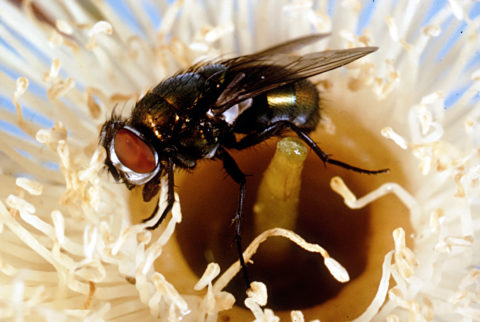Can we use flies to monitor RHDV activity?
The National Rabbit Biocontrol Monitoring Program is working on new and innovative ways to monitor the movement of the various RHDV (calicivirus) strains circulating in Australia.
Knowing the movement of different caliciviruses can help to guide the development, and increase the effectiveness of rabbit management programs, while domestic rabbit owners can instigate targeted prevention measures when calicivirus is active in their region.
Current effective methods do rely on members of the public submitting liver samples from dead rabbits through our online platform called Rabbitscan. However, many wild rabbits die in inaccessible locations or are scavenged before sampling can occur, leading to considerable sampling bias.
In 2019, Dr Robyn Hall and colleagues from the CSIRO led a study, published in the journal Transboundary and Emerging Diseases, looking at carrion flies as sentinels for monitoring RHDV activity in Australia.
The team of virologists sought to answer the question – could field-caught carrion flies be an option for understanding RHDV movement across the landscape?

Over a 22-month period (September 2016- June 2018) the research team caught and then analysed virus in flies and compared those with samples taken from dead wild rabbits.
The team found good correlation between the two, however more frequent fly sampling was required to achieve this correlation, and while working, the sensitivity of the fly sampling method still requires some validation.
This initial study has discovered some very promising results for the use of carrion flies as another tool for monitoring RHDV movement. The CSIRO based research team is now continuing the study to get a better understanding of this tool to monitor RHDV activity at a wider scale and improve the sensitivity of the method.
This original research was published as part of the CSIRO led, CISS project ‘National Rabbit Biocontrol Optimisation’.
You can view the full paper via: Hall, R. N., Huang, N., Roberts, J., & Strive, T. (2019). Carrion flies as sentinels for monitoring lagovirus activity in Australia. Transboundary and emerging diseases, 66(5), 2025-2032. https://doi.org/10.1111/tbed.13250




